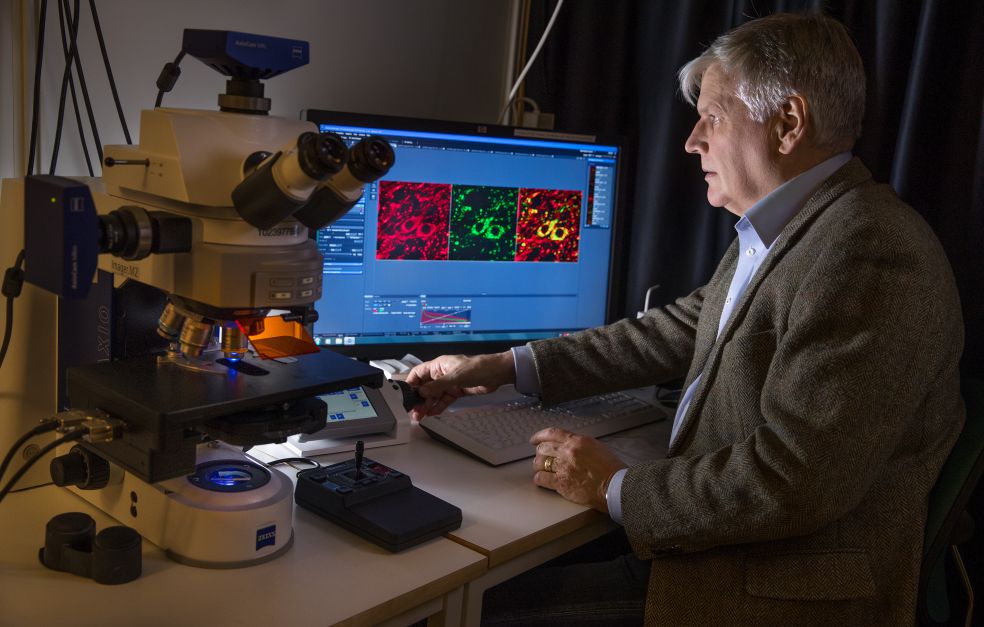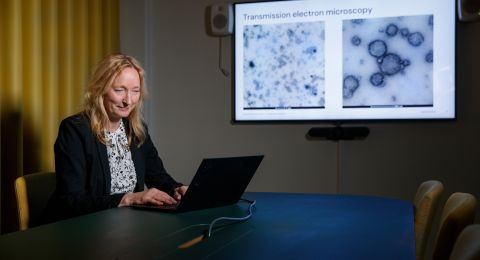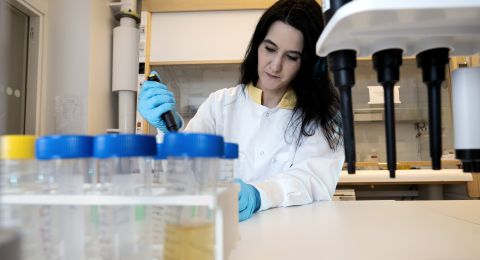Common diseases and the normal ageing process are linked to mitochondrial changes. Right from the outset, when he was a newly qualified doctor in the mid-1980s, Wallenberg scholar Nils-Göran Larsson was interested in mitochondrial diseases. He was to become one of the pioneers in the field. He may now be on the way to developing a new cancer therapy.
Nils-Göran Larsson
Professor of Mitochondrial Genetics
Wallenberg Scholar
Institution:
Karolinska Institutet
Research field:
Mitochondrial regulation of physiological processes; mitochondrial diseases
Throughout his research career Larsson has studied mitochondria – the powerhouses of the cells. In the late 1980s, when he was working as a pediatrician, he met patients with hereditary mitochondrial diseases. This is when he started to analyze their mitochondrial DNA – mtDNA.
Several years later, when he had received his PhD and qualified as a pediatrician, he took up a Howard Hughes Medical Institute Physician Postdoctoral research position at Stanford University in the U.S.
“I thought there was so much about mitochondria that was unclear, and so little that was understood. I wanted to get to the heart of the molecules and conduct pure basic research,” he recalls.
His time at Stanford was important from a number of viewpoints. It was there he learned biochemistry, and mouse genetics in particular.
“I was one of the first to use ‘tissue-specific knockout mice’.”
He began that work in the lab at Stanford, where he knocked out a gene in the cell nucleus that codes for a factor imported to the mitochondria, where it is was predicted to interact with mtDNA.
When Larsson arrived at Karolinska Institutet in 1997 he continued working with mice, and was able to show that the factor is vital and controls levels of mtDNA.
“We were able to use the mouse model to create low mtDNA levels in various tissues, and study how these impacted physiological processes in the heart, neurons, muscle cells and insulin-producing beta cells.”
And it was at Stanford that he met and started working with two other Swedish researchers: Maria Falkenberg and Claes Gustafsson – close collaboration that has endured for more than 20 years.
Premature ageing
Mitochondria perform an essential task. They convert the energy in the food we eat into ATP – the energy “currency” of the cell. ATP drives numerous vital processes.
Changes in mitochondrial function cause genetic diseases and is associated with the progression of common age-related diseases, such as heart failure, Parkinson’s disease and type 2 diabetes.
Mitochondria also contain their own genetic material, mtDNA, of which there are thousands of copies in each cell. These genetics is special because a child can only inherit mtDNA from its mother, not from the father.
“Only a small proportion of the mother’s mtDNA is passed on. Also, there appear to be multiple protective mechanisms that sift out the most serious mutations. This is a very interesting area that we are actively studying. I could talk about it for hours,” he says.
In 2004 Larsson’s research team published a study that attracted a great deal of attention. They were able to show that mice with high levels of mutations in their mtDNA aged much more quickly than normal. On average, the mice lived for just under a year, as compared with their normal life span of two to three years. They also developed several typical signs of premature ageing.
“Simply put, you might say we made a mouse that copied mtDNA sloppily, which caused a large number of mutations.”
The researchers were also able to debunk the myth of a vicious circle, in which mutations in mtDNA increase the production of free acid radicals, which in turn cause further mtDNA mutations. Larsson points out that an elevated number of mtDNA mutations are found in all ageing mammals. They accumulate in certain cells, where they impair function and cause cell death.
In 2007 Larsson was invited to establish a new Max Planck Institute in Cologne to study ageing.
“It was an extremely exciting and fruitful period that began in 2008 when I took up the position of Director, and ended in 2015 when I returned to Stockholm.”
Back at Karolinska Institutet, he set up a new research division.
“I am, and always have been, very interested in the molecular machinery that regulates mtDNA. Over the years, we have produced some 20 or so knock-out mouse variants, as well as large numbers of genetically modified fruit flies. Genetic studies combined with biochemistry have led to the discovery of multiple new factors and a completely new understanding of how mtDNA is regulated.”
Potential cancer treatment
Ever since the early 2000s Larsson and his colleagues Maria Falkenberg and Claes Gustafsson have had the idea of developing a candidate drug capable of manipulating mitochondrial function. Just before Christmas 2020, they were able to publish a breakthrough in Nature.
“We’ve synthesized a molecule that inhibits the expression of mtDNA. It can effectively inhibit tumor growth and is surprisingly well tolerated by normal tissues for a very long time.”
But so far the study has only been carried out on mice, and Larsson points out that many years of development lie ahead before the treatment can be tested on humans.
The researchers have set up a company for further development of their results, but Larsson stresses that he has no plans to become an entrepreneur. He will stick to what has fascinated him since he was a child: science – understanding how everything fits together.
“A huge amount remains to be done in the mitochondrial field. We hope our discoveries will lead to new therapies for mitochondrial diseases and common diseases of other kinds. Mitochondrial function declines as we age, and is also impaired in many age-related diseases, such as Parkinson’s disease.”
Text Carina Dahlberg
Translation Maxwell Arding
Photo TT Bildbyrå, Magnus Bergström






